Recent Publications

May 2017
Dorothy Noyes will be publishing her book Sustaining Interdisciplinary Collaboration: A Guide for the Academy written with Regina F. Bendix and Kilian Bizer (U of Illinois Press, 2017). The description from University of Illinois Press:
"At once a slogan and a vision for future scholarship, interdisciplinarity promises to break through barriers to address today's complex challenges. Yet even high-stakes projects often falter, undone by poor communication, strong feelings, bureaucratic frameworks, and contradictory incentives.
This new book shows newcomers and veteran researchers how to craft associations that will lead to rich mutual learning under inevitably tricky conditions. Strikingly candid and always grounded, the authors draw a wealth of profound, practical lessons from an in-depth case study of a multiyear funded project on cultural property. Examining the social dynamics of collaboration, they show readers how to anticipate sources of conflict, nurture trust, and jump-start thinking across disciplines. Researchers and institutions alike will learn to plan for each phase of a project life cycle, capturing insights and shepherding involvement along the way."
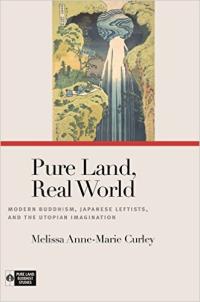
February 2017
Melissa Curley will be publishing her book Pure Land, Real World: Modern Buddhism, Japanese Leftists, and the Utopian Imagination (University of Hawai'i Press, 2017). The description from University of Hawai'i Press:
"For close to a thousand years Amida’s Pure Land, a paradise of perfect ease and equality, was the most powerful image of shared happiness circulating in the Japanese imagination. In the late nineteenth century, some Buddhist thinkers sought to reinterpret the Pure Land in ways that would allow it speak to modern Japan. Their efforts succeeded in ways they could not have predicted. During the war years, economist Kawakami Hajime, philosopher Miki Kiyoshi, and historian Ienaga Saburō—left-leaning thinkers with no special training in doctrinal studies and no strong connection to any Buddhist institution—seized upon modernized images of Shinran in exile and a transcendent Western Paradise to resist the demands of a state that was bearing down on its citizens with increasing force. Pure Land, Real World treats the religious thought of these three major figures in English for the first time.
Kawakami turned to religion after being imprisoned for his involvement with the Japanese Communist Party, borrowing the Shinshū image of the two truths to assert that Buddhist law and Marxist social science should reinforce each other, like the two wings of a bird. Miki, a member of the Kyoto School who went from prison to the crown prince’s think tank and back again, identified Shinran’s religion as belonging to the proletariat: For him, following Shinran and working toward building a buddha land on earth were akin to realizing social revolution. And Ienaga’s understanding of the Pure Land—as the crystallization of a logic of negation that undermined every real power structure—fueled his battle against the state censorship system, just as he believed it had enabled Shinran to confront the world’s suffering head on.
Such readings of the Pure Land tradition are idiosyncratic—perhaps even heretical—but they hum with the same vibrancy that characterized medieval Pure Land belief. Innovative and refreshingly accessible, Pure Land, Real World shows that the Pure Land tradition informed twentieth-century Japanese thought in profound and surprising ways and suggests that it might do the same for twenty-first-century thinkers. The critical power of Pure Land utopianism has yet to be exhausted."

December 2016
Julia Watson (and Sidonie Smith) recently published Life Writing in the Long Run: A Smith & Watson Autobiography Studies Reader (Michigan Publishing Services, 2017). The description from Michigan Publishing Services:
"Life Writing in the Long Run gathers twenty-one essays by Sidonie Smith and Julia Watson written in collaboration or solo and published over the last quarter-century. It includes the introductions to their five edited collections; essays focused on such autobiographical genres as autoethnography, Bildungsroman, diary, digital life writing, genealogy, graphic memoir, human rights witnessing, manifesto; and essays engaging the key concepts of authenticity, performativity, postcoloniality, relationality, and visuality."
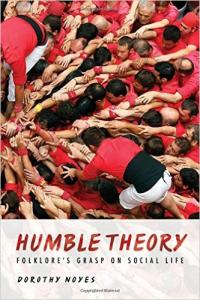
October 2016
Dorothy Noyes recently published her book Humble Theory: Folklore's Grasp on Social Life (Indiana University Press, 2016). The description from Indiana University Press:
"Celebrated folklorist, Dorothy Noyes, offers an unforgettable glimpse of her craft and the many ways it matters. Folklore is the dirty linen of modernity, carrying the traces of working bodies and the worlds they live in. It is necessary but embarrassing, not easily blanched and made respectable for public view, although sometimes this display is deemed useful. The place of folklore studies among modern academic disciplines has accordingly been marginal and precarious, yet folklore studies are foundational and persistent. Long engaged with all that escapes the gaze of grand theory and grand narratives, folklorists have followed the lead of the people whose practices they study. They attend to local economies of meaning; they examine the challenge of making room for maneuver within circumstances one does not control. Incisive and wide ranging, the fifteen essays in this book chronicle the "humble theory" of both folk and folklorist as interacting perspectives on social life in the modern Western world."
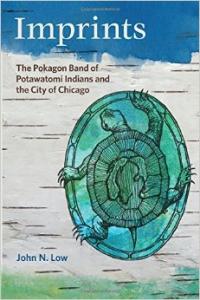
February 2016
John Low, an Assistant Professor in Comparative Studies at OSU Newark, recently published his book Imprints: The Pokagon Band of Potawatomi Indians and the City of Chicago (Michican State University Press, 2016). The description from Michigan State University Press:
"The Pokagon Band of Potawatomi Indians has been a part of Chicago since its founding. In very public expressions of indigeneity, they have refused to hide in plain sight or assimilate. Instead, throughout the city’s history, the Pokagon Potawatomi Indians have openly and aggressively expressed their refusal to be marginalized or forgotten—and in doing so, they have contributed to the fabric and history of the city.
Imprints: The Pokagon Band of Potawatomi Indians and the City of Chicago examines the ways some Pokagon Potawatomi tribal members have maintained a distinct Native identity, their rejection of assimilation into the mainstream, and their desire for inclusion in the larger contemporary society without forfeiting their “Indianness.” Mindful that contact is never a one-way street, Low also examines the ways in which experiences in Chicago have influenced the Pokagon Potawatomi. Imprints continues the recent scholarship on the urban Indian experience before as well as after World War II."
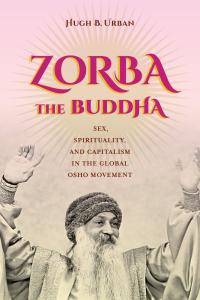
January 2016
Hugh B. Urban, Director of the Center for the Study of Religion, recently published his book Zorba the Buddha: Sex, Spirituality, and Capitalism in the Global Osho Movement (Berkeley: University of California Press, 2016). The description from Berkeley: University of California Press:
"Zorba the Buddha is the first comprehensive study of the life, teachings, and following of the controversial Indian guru known in his youth as Bhagwan Shree Rajneesh and in his later years as Osho (1931–1990). Most Americans today remember him only as the “sex guru” and the “Rolls Royce guru,” who built a hugely successful but scandal-ridden utopian community in central Oregon during the 1980s. Yet Osho was arguably the first truly global guru of the twentieth century, creating a large transnational movement that traced a complex global circuit from post- Independence India of the 1960s to Reagan’s America of the 1980s and back to a developing new India in the 1990s. The Osho movement embodies some of the most important economic and spiritual currents of the past forty years, emerging and adapting within an increasingly interconnected and conflicted late-capitalist world order. Based on extensive ethnographic and archival research, Hugh Urban has created a rich and powerful narrative that is a must-read for anyone interested in religion and globalization."
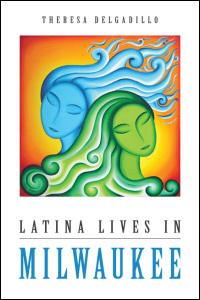
November 2015
Theresa Delgadillo published her book Latina Lives in Milwaukee (Champaign-Urbana: University of Illinois Press, 2015). The description from Champaign-Urbana: University of Illinois Press:
"Milwaukee's small but vibrant Mexican and Mexican American community of the 1920s grew over succeeding decades to incorporate Mexican, Mexican American, Puerto Rican, Cuban, Central American, and Caribbean migration to the city. Drawing on years of interviews and collaboration with interviewees, Theresa Delgadillo offers a set of narratives that explore the fascinating family, community, work, and career experiences of Milwaukee's Latinas during this time of transformation.
Through the stories of these women, Delgadillo caringly provides access to a wide variety of Latina experiences: early Mexican settlers entering careers as secretaries and entrepreneurs; Salvadoran and Puerto Rican women who sought educational opportunity in the United States, sometimes in flight from political conflicts; Mexican women becoming leather workers and drill press operators; and second-generation Latinas entering the professional classes. These women show how members of diverse generations, ethnicities, and occupations embraced interethnic collaboration and coalition but also negotiated ethnic and racial discrimination, domestic violence, workplace hostilities, and family separations.
A one-of-a-kind collection, Latina Lives in Milwaukee sheds light on the journeys undertaken then and now by Latinas in the region, and lays the foundation for the further study of the Latina experience in the Midwest."
participation in religious community, political and social activism, education,entrepreneurship, bilingualism/language, immigration, social justice, transnationallives/continued links to home countries.
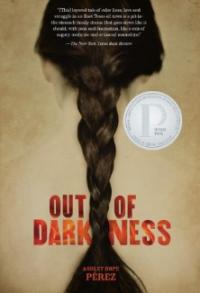
2015
Ashley Perez published her young adult, fiction novel called Out of Darkness (Minneapolis: Carolrhoda Lab-Lerner, 2015). The description from Lerner:
"'This is East Texas, and there's lines. Lines you cross, lines you don't cross. That clear?'
New London, Texas. 1937. Naomi Vargas and Wash Fuller know about the lines in East Texas as well as anyone. They know the signs that mark them. They know the people who enforce them. But sometimes the attraction between two people is so powerful it breaks through even the most entrenched color lines. And the consequences can be explosive.
Ashley Hope Pérez takes the facts of the 1937 New London school explosion—the worst school disaster in American history—as a backdrop for a riveting novel about segregation, love, family, and the forces that destroy people."
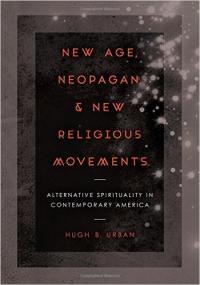
September 2015
Hugh B. Urban, Director of the Center for the Study of Religion, published his book New Age, Neopagan, and New Religious Movements: Alternative Spirituality in Contemporary America (Berkeley: University of California Press, 2015). The description from Berkeley: University of California Press:
"New Age, Neopagan, and New Religious Movements is the most extensive study to date of modern American alternative spiritual currents. Hugh B. Urban covers a range of emerging religions from the mid-nineteenth century to the present, including the Nation of Islam, Mormonism, Scientology, ISKCON, Wicca, the Church of Satan, Peoples Temple, and the Branch Davidians. This essential text engages students by addressing major theoretical and methodological issues in the study of new religions and is organized to guide students in their learning. Each chapter focuses on one important issue involving a particular faith group, providing readers with examples that illustrate larger issues in the study of religion and American culture.
Urban addresses such questions as, Why has there been such a tremendous proliferation of new spiritual forms in the past 150 years, even as our society has become increasingly rational, scientific, technological, and secular? Why has the United States become the heartland for the explosion of new religious movements? How do we deal with complex legal debates, such as the use of peyote by the Native American Church or the practice of plural marriage by some Mormon communities? And how do we navigate issues of religious freedom and privacy in an age of religious violence, terrorism, and government surveillance?"
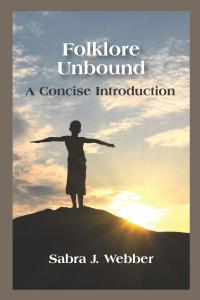
November 2014
Sabra Webber published he book Folklore Unbound: A Concise Introduction (Waveland Press, 2014). The description from Waveland Press:
"Folklore is a powerful resource that not only manages the past, giving it continuity, but also usefully comments on present cultural and social issues. This thoughtful, incisive work first charts important dimensions in the development of folklore studies from the eighteenth century to the present. Next, it marshals the major theoretical issues of the modern discipline, including performance theory, genre theory, the relationship with culture studies and the study of linguistic and musical art forms, the insights of comparative studies, public folklore, and even the place of folklore in the media. Webber draws heavily on the influential work and maverick charisma of Alan Dundes, world famous folklorist who expanded the definitions of both “folk” and “lore” for thousands of folklore students and underscored why lore should be studied ethnographically and aesthetically. Webber’s aim is to evaluate the study of folklore as a tool for understanding the lived experience of various “folk” and for questioning, rather than reinforcing, the status quo. Her work, which draws from the rich methods and materials of many disciplines, shows originality, breadth, and a firm grasp of the history of folkloristics."
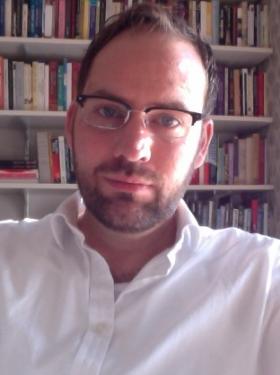
August 2014
- Leo Coleman, Professor of Comparative Studies, will be publishing an article in the August issue of American Ethnologist. The title is “Devices, Connections, Emblems: Interpreting Infrastructure and State Imagination in India and Scotland,” in American Ethnologist vol 41 no 3. Additionally, in November an article of Professor Coleman's on Citizens United will come out in the Political and Legal Anthropology Review.
July 2014
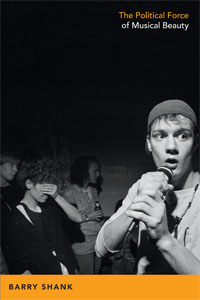
- Barry Shank, Department Chair and Professor of Comparative Studies, recently published his book The Political Force of Musical Beauty (Duke University Press, 2014). The description from Duke University Press:
"In The Political Force of Musical Beauty, Barry Shank shows how musical acts and performances generate their own aesthetic and political force, creating, however fleetingly, a shared sense of the world among otherwise diverse listeners. Rather than focusing on the ways in which music enables the circulation of political messages, he argues that communities grounded in the act and experience of listening can give rise to new political ideas and expression. Analyzing a wide range of "beautiful music" within popular and avant-garde genres—including the Japanese traditions in the music of Takemitsu Toru and Yoko Ono, the drone of the Velvet Underground, and the insistence of hardcore punk and Riot grrrl post-punk—Shank finds that when it fulfills the promise of combining sonic and lyrical differences into a cohesive whole, musical beauty has the power to reorganize the basis of social relations and produce communities that recognize meaningful difference."
April 2014

Julia Watson, Professor of Comparative Studies, recently wrote an essay with Sidone Smith (Professor of English and Women's Studies, University of Michigan) entitled "Studying the Digital Self: Five analytical concepts that can guide
scholarship on virtual lives" for the Chronicle of Higher Education. The essay was adapted from a longer version that appeared in Identity Technologies: Constructing the Self Online (University of Wisconsin Press 2014, edited by Anna Poletti and Julie Rak).
November 2013
Dr. Issac Weiner releases new book. (from NYU Press)

Religion Out Loud
Religious Sound, Public Space, and American Pluralism
June 2013
Julia Watson published “Strategic Autoethnography and American Ethnicity Debates: The Metrics of Authenticity in When I Was Puerto Rican.” in Life Writing, Special Issue on Women’s Life Writing and Diaspora, 10:2, 129-50.
Spring 2013
Julia Watson recently published "Witness or False Witness? Metrics of Authenticity, Collective I-Formations, and the Ethic of Verification in First-Person Testimony." with Sidone Smith in Biography: An Interdisciplinary Quarterly 35.4 (Fall 2012): 590–627. (Published spring 2013).
August 2011
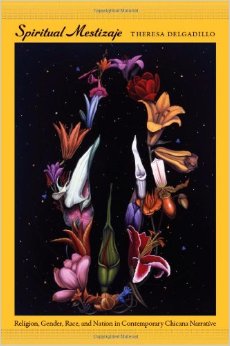
Theresa Delgadillo’s Spiritual Mestizaje: Religion, Gender, Race, and Nation in Contemporary Chicana Narrative (Duke University Press 2011) reveals spiritual mestizaje as central to the queer feminist Chicana theorist’s life and thought, and as a critical framework for interpreting contemporary Chicana literary and visual narratives. Delgadillo’s critical reading of literary and visual technologies demonstrates how Chicanas challenge normative categories of gender, sexuality, nation, and race by depicting alternative visions of spirituality. In research and teaching she explores the intersections among gender, sexuality, race and nation as well as critique these categories; engage with comparative, transnational and migratory paradigms and movements; pursue transdisciplinary knowledge; and desire to make socially transformative knowledge possible.
